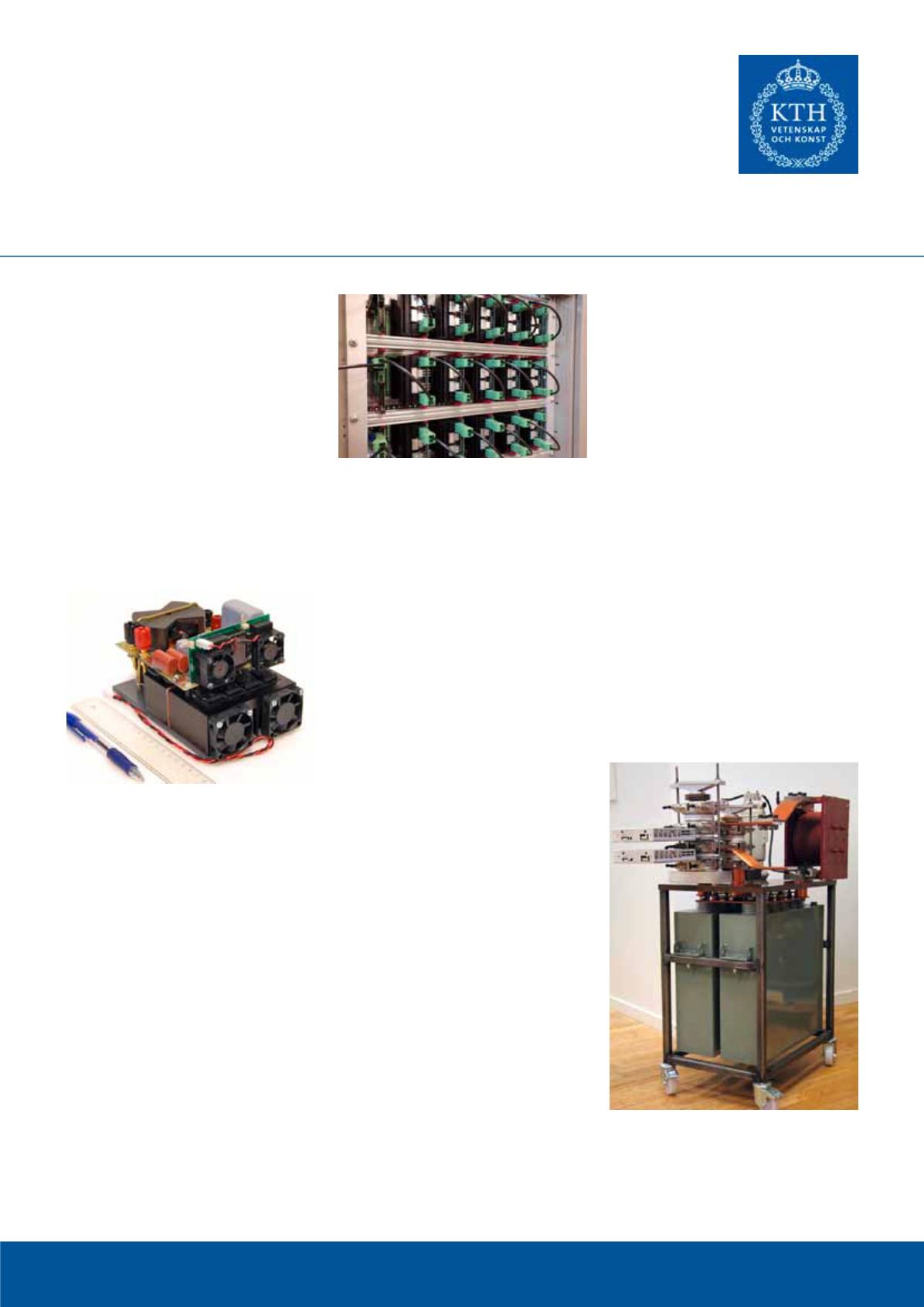
161
The power electronics group at KTH
currently has two seniors, prof. Hans-Peter
Nee and assoc. prof. Staffan Norrga. In
addition, a number of adjoint faculty
members from industry contribute to
research and teaching, and also serve as
a link between KTH and our industrial
partners. There are typically 10-15 Ph. D.
students and postdoctoral researchers in
the group. Our research activities mainly
fall in two categories – high power elec-
tronics and wide bandgap power semi-
conductor applications.
High power electronics
High power electronics concern large scale
power conversion with converters in the
range of tens of megawatts up to giga-
watts. Typical applications range from
large motor drives and railway power sup-
plies to high voltage direct current (HVDC)
links used for long distance power trans-
mission.
KTH has for many decades conducted
research into this field, starting out already
in the era of mercury-arc valves. In later
years, research has been focused on mod-
ular multilevel converters (MMCs) since
these are rapidly being adopted in many
applications that are important for our
industrial partners.
System aspects of MMCs are studied in
several projects. This includes research
into several new converter topologies, for
instance to allow for the converters to be
compatible with HVDC grids. Also control
and modulation of MMCs is investigated
by the group. Schemes enabling lower
losses and increased performance have
been devised and verified by experiments
on down-scaled prototypes.
The group is also investigating alternative
semiconductor choices for high power
converters. One track concerns converter
cells based on gate commutated thyristors
(GCTs), which can offer great benefits in
terms of cost and power losses. Our lab
enables full-scale testing of converter cells
up to several MVA.
Wide-bandgap power semiconductor
applications
The group has been performing research
on silicon carbide (SiC) power electronics
for almost 20 years. Topics that have been
covered include: inverters employing mas-
sive parallel connection and diode-less
operation, gate drivers for various devices
including solutions for normally-ON devices,
short-circuit protection of SiC transistors,
investigations regarding various reliability
issues of SiC MOSFETs. Also, power elec-
tronics for operation at extreme tempera-
tures – beyond 600 C – is being studied.
Furthermore, the study of high-voltage
devices in SiC has recently been initiated.
The work is organized as two parallel
activities, where one is focused on mod-
elling and testing of devices, and the
other is focused on submodule design
for high-power, high-voltage converters.
Both activities are still in the build-up
phase, but preliminary results indicate
that bipolar devices with ratings of 30 kV
can provide significant advantages both
from a loss perspective and by reducing
the complexity of the converter. Great re-
ductions in converter size are also foreseen.
KTH Royal Institute of Technology in Sweden


